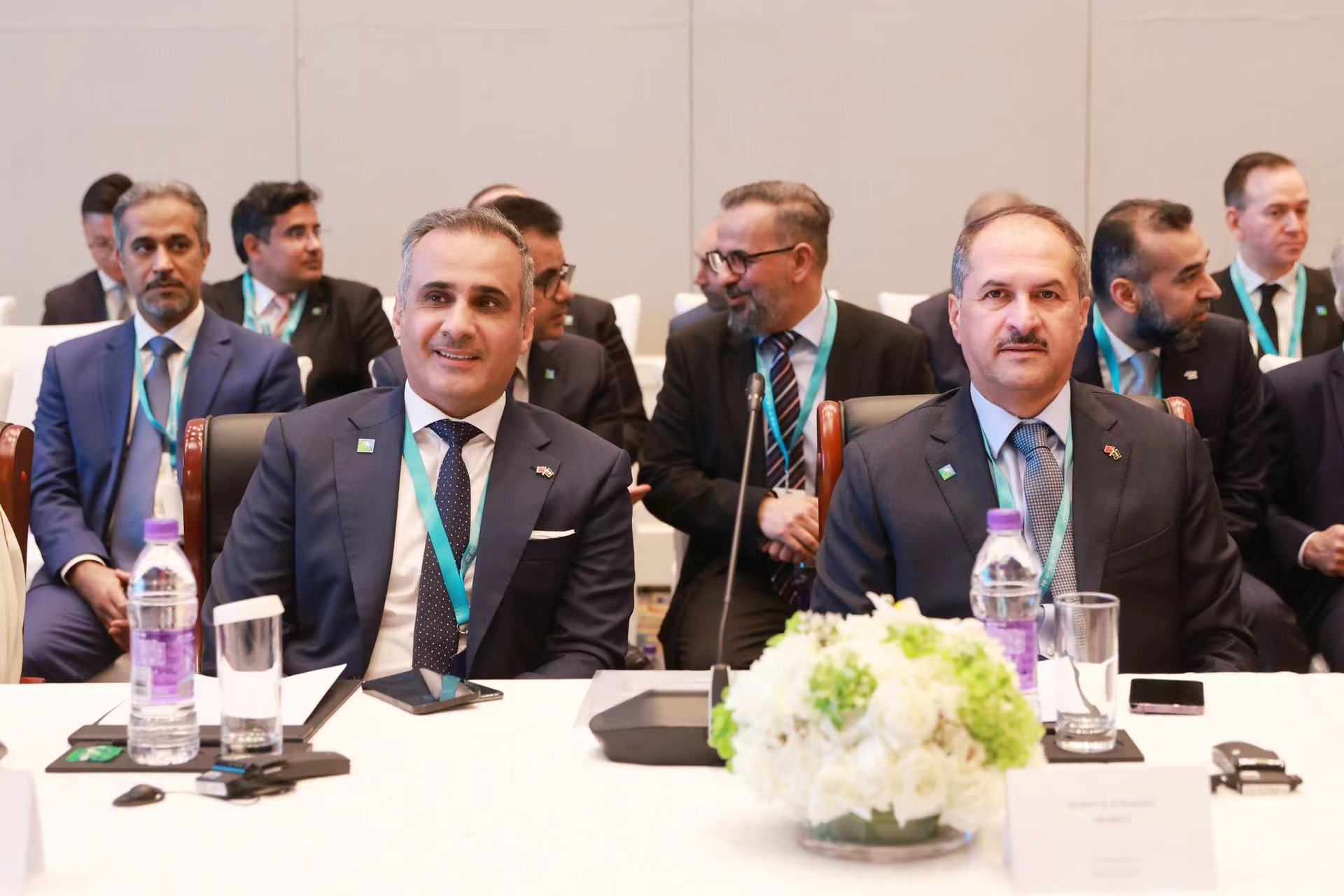Organized by the Ministry of Energy of the Kingdom of Saudi Arabia, the 1st Saudi-China Energy Forum was held in Beijing from October 19 to 20, discussing opportunities in the energy sector to further strengthen the partnership between the two countries, with the involvement of the National Energy Administration as well as leaders from the business communities of both countries.
Zhang Jianhua, Chairman of the National Energy Administrator of the People’s Republic of China, and Mohammed A. Al-Ibrahim, Assistant Minister for Oil and Gas of the Ministry of Energy of the Kingdom of Saudi Arabia, attended the forum.
Ibrahim Al-Buainain, Aramco Executive Vice President of Global Manufacturing, delivered a keynote speech during the forum.
Below is the full speech:
Distinguished guests, ladies and gentlemen: xià wǔ hǎo and good afternoon.
It is wonderful to be back in Beijing with our dear Chinese partners and friends.
I would like to congratulate our Minister of Energy, His Royal Highness, Prince Abdulaziz bin Salman bin Abdulaziz and His Excellency the Administrator of NEA, for bringing us together at this Forum, in support of ever closer Saudi Chinese relations.
Certainly, that is our intent at Aramco, because our view of the energy future—and the most realistic path to get there—closely aligns with China’s.
So does our view of what it will take to reach the next level in our economic and social development journey.
Aramco is proud to have delivered consistent and reliable energy to China for more than 30 years.
Our partnership has expanded beyond oil delivery to include ventures of increasing value in refining, petrochemicals, and more.
From the jointly-owned Fujian Refining and Petrochemical Company to our recent collaborations through Rongsheng and HAPCO, our relationship has moved from strength-to-strength.
It has transcended mere business transactions to become a genuine friendship between two parties supporting each other’s mutual goals.
And today, I would like to use this opportunity to talk about the practical ways we are aligning even more closely on our shared priorities.
First, we aim to increase our gas production by more than fifty percent by 2030.
This should release an additional million barrels of oil per day for export , which will help to strengthen China’s long-term energy security.
Second, we are exploring how we can reduce the already low carbon intensity of our oil production, as well as our methane intensity.
In particular, we are looking into solutions like carbon capture and storage technologies that have potential to capture greenhouse gas emissions.
China’s research expertise and venture capital space offers important investment opportunities to stimulate technology development and innovation.
We are proud to work closely with academic institutions, including Peking, Tsinghua, Nankai, Southwest Petroleum, and Jilin Universities to enhance our carbon capture and storage technologies.
Meanwhile, since cars with conventional engines are likely to dominate roads for quite some time , we are also developing more efficient engines and hybrid systems.
All these initiatives can help both China and the Kingdom meet their emissions reduction goals.
Third, we are steadily adding lower carbon energy to our portfolio, especially blue hydrogen and blue ammonia, electrofuels, and renewables.
Hydrogen, in particular, is another area where our collaboration with China’s esteemed academic institutions is yielding positive results.
And given the potential application in the transport sector, our Beijing Research Center is focused on developing lower carbon hydrogen solutions that can help move people and goods in a more climate conscious manner.
These more sustainable energy sources and technologies can help China continue to power its progress while maintaining momentum towards net-zero.
As the energy transition evolves, there is also the critical issue of Materials Transition.
Reducing emissions from hard-to-abate sectors like steel and aluminum, cement and concrete is relevant to China’s high-quality development.
We are partnering with Baosteel to produce steel plates with a lower carbon footprint.
More broadly, we are developing advanced, more sustainable materials such as those based on polymers and carbon to complement conventional ones, while reducing their high cost.
We have also launched a new center of excellence for non-metallic technologies called NEXCEL, right here in Beijing.
And we continue to collaborate with the China National Building Material Group in Saudi Arabia to develop carbon fiber products and graphite.
To complement all of this work, we are also investing in game-changing, start-up technologies across various sectors and industries.
That includes through our Prosperity7 Ventures, which is headquartered in Dhahran but has offices here in Beijing and Shanghai.
Finally, I want to highlight the dimensions of our partnership that go beyond energy and R&D to include our corporate citizenship projects here in China.
We take pride in our efforts to plant trees across the country, promote youth programs and engagement with sport, and strengthen the availability of medical treatments for children. We also support the public library at Peking University, which was inaugurated by the Custodian of the Two Holy Mosques, King Salman during his visit in 2017.
With all of these examples, I hope you will see that our message is unchanged.
We want to be a reliable source of energy and chemicals for China’s long-term energy security and China’s high- quality development.
And our investments not only recognize the multi-speed, multi-source and multi-dimensional approach we must take to the energy and mobility transitions, but to the materials transition as well.
That is why we are doubling down on China’s energy supply, including new lower carbon products; chemicals; and advanced materials, all supported by promising technologies.
In particular, we see a major win-win opportunity to build a world-leading, integrated downstream sector in China, with special emphasis on the high conversion of liquids directly into chemicals.
And we have backed that approach with new investments and joint ventures.
Ladies and Gentlemen,
Already, we have achieved so much together. But there is much more to come.
China’s long-term energy security and high-quality development are among our highest priorities at Aramco.
Today and far, far, far into the future.
Thank you, and xiè xie.

.jpg?cx=0.5&cy=0.5&mw=10)


